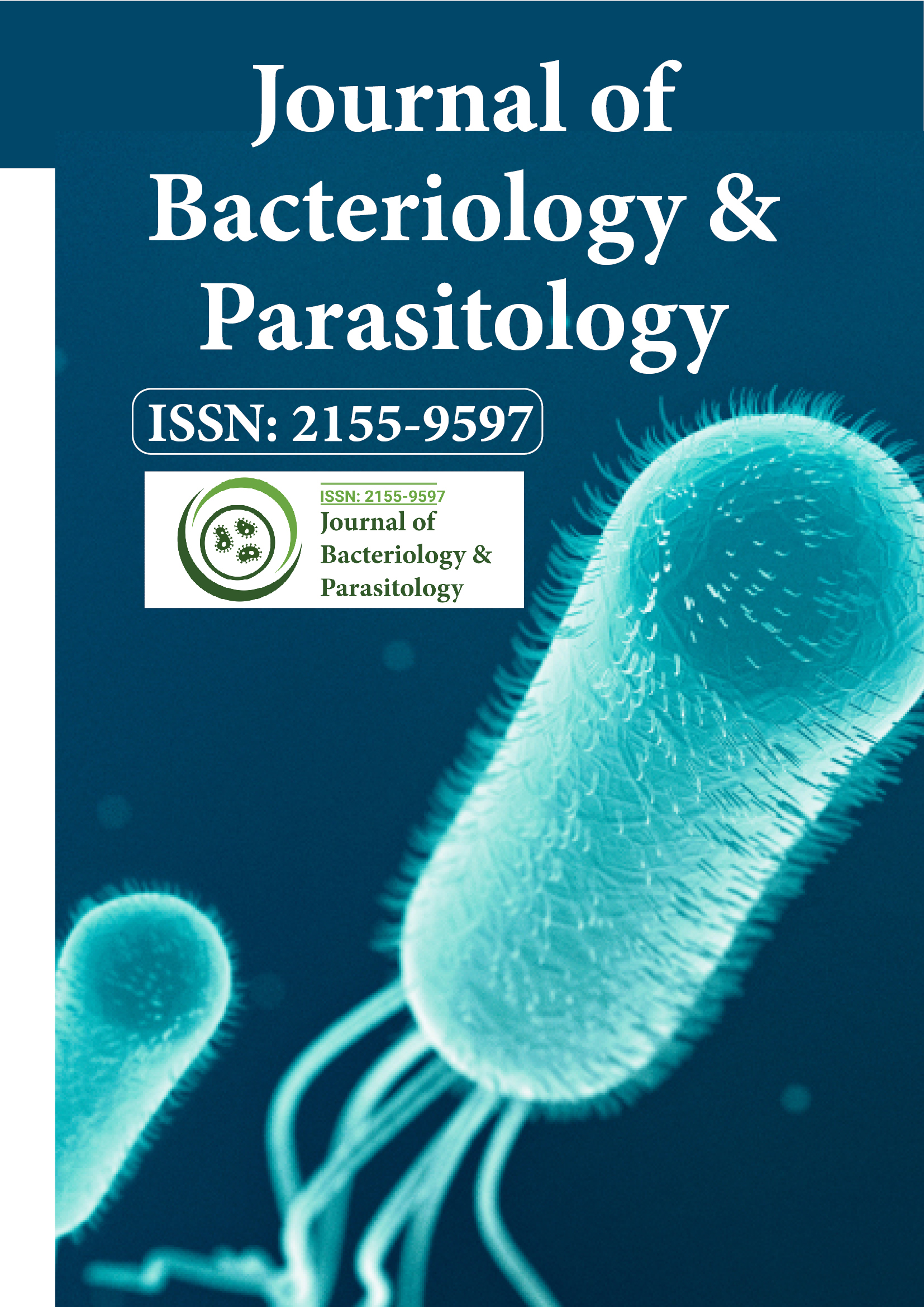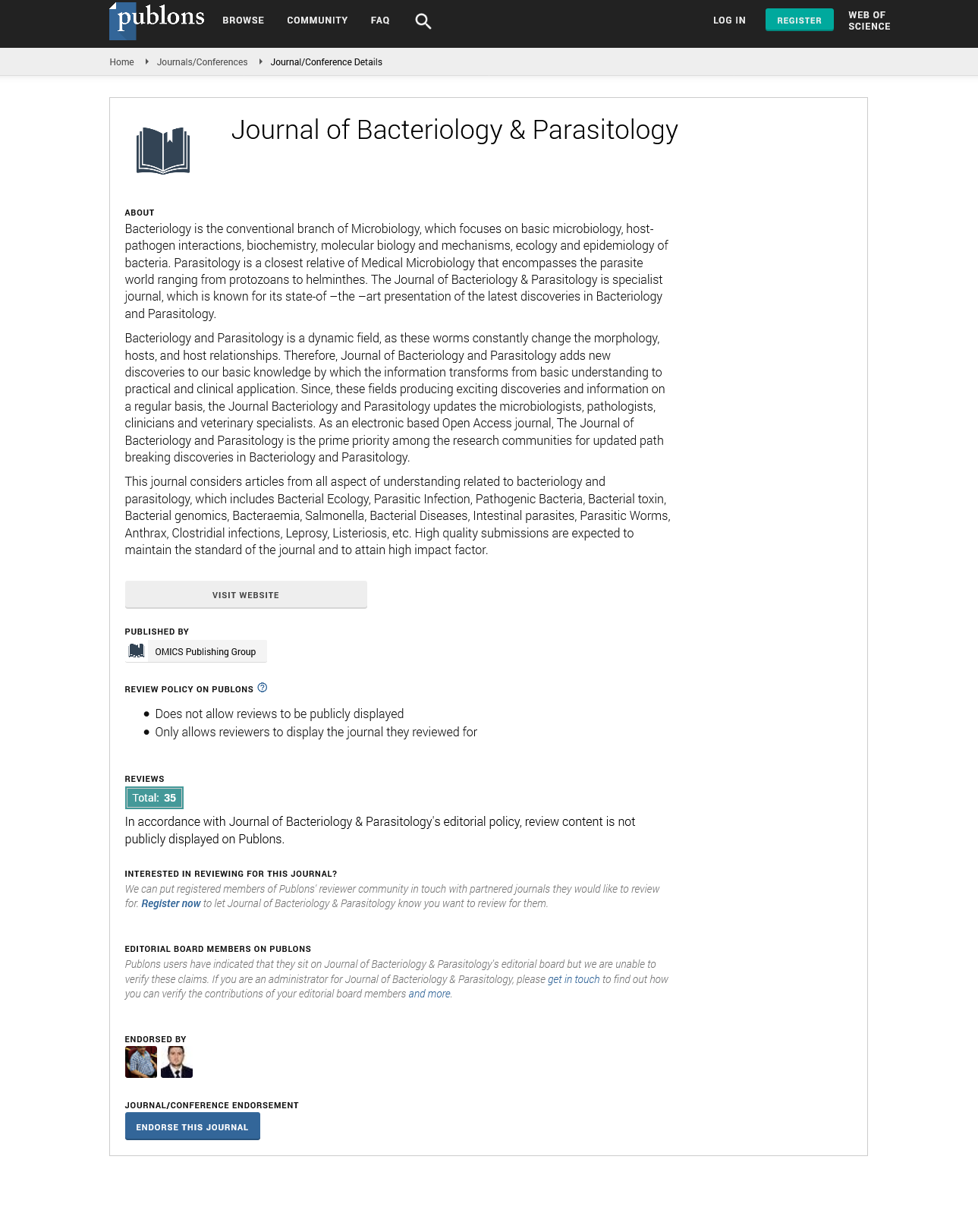Indexed In
- Open J Gate
- Genamics JournalSeek
- Academic Keys
- JournalTOCs
- ResearchBible
- Ulrich's Periodicals Directory
- Access to Global Online Research in Agriculture (AGORA)
- Electronic Journals Library
- RefSeek
- Hamdard University
- EBSCO A-Z
- OCLC- WorldCat
- SWB online catalog
- Virtual Library of Biology (vifabio)
- Publons
- MIAR
- Geneva Foundation for Medical Education and Research
- Euro Pub
- Google Scholar
Useful Links
Share This Page
Journal Flyer

Open Access Journals
- Agri and Aquaculture
- Biochemistry
- Bioinformatics & Systems Biology
- Business & Management
- Chemistry
- Clinical Sciences
- Engineering
- Food & Nutrition
- General Science
- Genetics & Molecular Biology
- Immunology & Microbiology
- Medical Sciences
- Neuroscience & Psychology
- Nursing & Health Care
- Pharmaceutical Sciences
Opinion Article - (2025) Volume 16, Issue 2
Bacterial Toxins: Mechanisms of Action and Impacts on Human Physiology
Lillian Romero*Received: 24-Mar-2025, Manuscript No. JBP-25-29944; Editor assigned: 26-Mar-2025, Pre QC No. JBP-25-29944; Reviewed: 09-Apr-2025, QC No. JBP-25-29944; Revised: 16-Apr-2025, Manuscript No. JBP-25-29944; Published: 23-Apr-2025, DOI: 10.35248/2155-9597.25.16.538
Description
Many pathogenic bacterial species produce molecules that disrupt host cell function; these are toxins. Their modes differ: some target cell membranes, others interfere with protein synthesis, signal transduction, or intracellular trafficking. These toxins may exist in soluble form, or act when bacteria attach to host cells. Understanding these agents is critical for treatment and prevention.
One type, poreâ?forming toxins, insert into membranes to create channels that disrupt ion balance, causing cell swelling or death. Examples include Staphylococcus aureus αâ?toxin and the cholesterolâ?dependent cytolysins of Clostridium perfringens. Others, such as diphtheria toxin, inactivate elongation factor 2, halting protein translation in host cells, provoking cell injury in throat tissues and potential systemic spread. Botulinum toxin blocks neurotransmitter release, leading to paralysis; tetanus toxin causes uncontrolled muscle contraction by interfering with inhibitory neurotransmission. Another group, exotoxins, often secreted during bacterial growth, act at a distance; endotoxin, present in gramâ?negative bacteria, is released when bacterial cells die or multiply, triggering strong immune activation including fever, sepsis and shock.
Effects on human physiology span from local damage to systemic failure. At infection sites, toxins may degrade tissue, cause fluid loss, necrosis or ulceration. When toxins enter bloodstream, they may reach organs such as liver, kidney or brain. Immune responses include production of cytokines and recruitment of immune cells; sometimes these responses contribute to pathology, as in toxic shock syndrome where superantigens overstimulate immune pathways.
Neutralization of toxins is often treatment goal. Antitoxins antibodies generated naturally or via immunization bind to toxin molecules and block their interaction with host receptors. For diphtheria and tetanus, existing vaccines provoke antitoxin immunity. In cases of botulism, antitoxin administration early can prevent progression. Supportive care includes maintaining respiration, hydration, and managing organ dysfunction. Antibiotics may reduce bacterial load but sometimes risk releasing more endotoxin as cells lyse. Laboratory detection entails identifying toxin genes, assaying for toxin activity or detecting toxin protein in biological fluids. Molecular techniques amplify specific gene sequences; animal or cell culture assays test functional effects. In epidemiology, genetic typing of toxin variants helps track spread of highly virulent strains. For example, strains with altered toxin subunits may evade immune responses or vaccine-induced antibodies, reducing effectiveness of preventive measures.
Environmental factors play a role. Some bacteria produce toxins when under stress, such as nutrient limitation or competition. Biofilm formation protects bacterial communities and may concentrate toxins near host tissue. Temperature, pH and presence of other organisms influence toxin gene expression.
Preventing toxin-mediated disease demands vaccination, hygiene, control of infection sources, safe food preservation and processing. Pasteurization, refrigeration, proper cooking kill bacteria or reduce expression of toxins. In hospital settings strict sterilization, isolation of infected patients, and monitoring of surgical instruments prevent medical device related infections by toxin producing microbes.
Conclusion
Scientific investigation continues into development of inhibitors that block toxin binding or internalization, small molecules to disrupt toxin folding or secretion, and immunotherapy approaches including monoclonal antibodies. These may complement existing vaccines or treat cases where vaccination did not occur or immune response is insufficient. Observing bacterial responses and toxin regulation may lead to treatments that suppress production rather than kill bacteria, thus reducing inflammatory side effects. In sum, bacterial toxins represent serious threats because of their ability to damage tissue, disrupt normal physiology and provoke harmful immune responses. Deep understanding of how toxins function, how hosts defend themselves and how medical interventions can stop toxin action leads toward safer treatments and reduced mortality.
Citation: Romero L (2025). Bacterial Toxins: Mechanisms of Action and Impacts on Human Physiology. J Bacteriol Parasitol. 16:538
Copyright: © 2025 Romero L. This is an open-access article distributed under the terms of the Creative Commons Attribution License, which permits unrestricted use, distribution and reproduction in any medium, provided the original author and source are credited.

